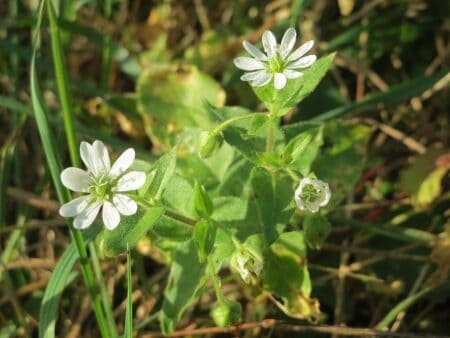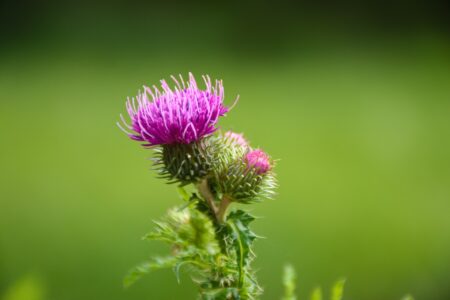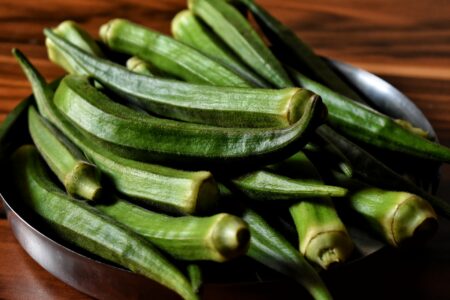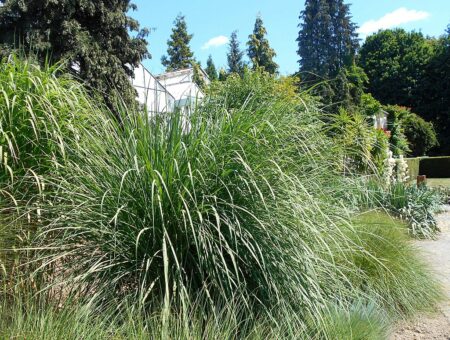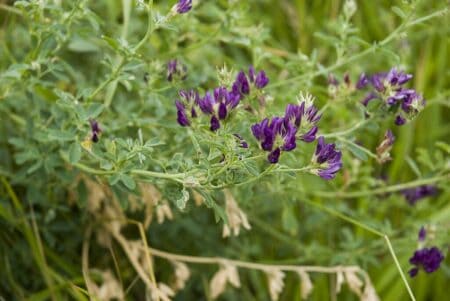Does your okra patch thrive in the summer sun’s heat but still struggle with pests or poor soil?
Certain companion plants can help create a symbiotic microclimate that benefits them and your okra.
This guide will explore time-tested pairings that attract beneficial insects and enhance soil nutrients. You’ll walk away with practical tips for incorporating companions to boost your okra yield.
- What Is Okra?
- Why Is Companion Planting Important for Okra?
- Companion Plants for Okra
- Companion Plant #1: Marigolds
- Companion Plant #2: Sunflowers
- Companion Plant #3: Basil
- Companion Plant #4: Nasturtiums
- Companion Plant #5: Chamomile
- Companion Plant #6: Cucumbers
- Companion Plant #7: Amaranth
- Companion Plant #8: Legumes
- Companion Plant #9: Lettuce
- Companion Plant #10: Onions
- Companion Plant #11: Tomatoes
- Companion Plant #12: Peppers
- Conclusion
What Is Okra?
Okra, also known by its botanical name Abelmoschus esculentus, is a flowering plant widely cultivated for its edible green pods.
This plant is a member of the mallow family and is often referred to as “lady’s finger” due to the elongated, slender shape of its pods.
Originating in Africa, okra has become a staple in many cuisines worldwide, particularly in Southern cooking in the United States, Indian, Middle Eastern, and Caribbean dishes.
The okra plant is known for its distinctive appearance.
It features heart-shaped leaves and hibiscus-like flowers ranging from white to yellow with a deep crimson center.
These flowers eventually give way to the characteristic green pods harvested while still tender and young to ensure optimal taste and texture.
One of the unique attributes of okra is its natural mucilage, a slimy substance found within the pods.
While this sliminess can be off-putting to some, it gives okra special culinary characteristics.
When cooked, the mucilage is a thickening agent, making it a key ingredient in dishes like gumbo and stews.
In addition to its thickening properties, okra is appreciated for its mild flavor, often described as a mix between eggplant and asparagus.
From a nutritional standpoint, okra offers a range of health benefits. It’s low in calories and carbohydrates, making it suitable for various diets.
Okra is a viable source of dietary fiber, which supports digestive health and can help regulate blood sugar levels.
Okra contains a decent amount of vitamins and minerals, including vitamin C, vitamin K, and folate.
Why Is Companion Planting Important for Okra?
Companion planting for okra is like arranging a cozy garden playdate!
Not only does it help maximize space, but it also creates a harmonious environment where plants help each other out.
Benefit #1: Pest Control
Companion planting with certain plants can naturally deter pests that might otherwise bother okra.
For example, marigolds can repel nematodes that harm okra roots.
Benefit #2: Disease Prevention
Some companion plants have natural compounds that can help suppress the growth of diseases that might affect okra, reducing the need for chemical treatments.
Benefit #3: Nutrient Sharing
Companion plants, like legumes, can fix nitrogen in the soil.
This enriches the soil with essential nutrients that benefit okra and improve its growth.
Benefit #4: Space Optimization
Pairing okra with compatible companions can help make the most of your garden space, allowing you to grow multiple plants together without overcrowding.
Benefit #5: Beneficial Microorganisms
Some companion plants foster beneficial soil microbes, creating a healthier soil ecosystem.
This healthier soil, in turn, supports the growth of okra.
Companion Plants for Okra
Companion planting is like assembling a team where each member brings a peculiar talent, helping your okra plants thrive in a more balanced and productive environment.
Here are a few great companion plants for okra.
Companion Plant #1: Marigolds

Marigolds are excellent companions for okra as their strong scent can help repel nematodes that harm okra’s root system.
They also attract beneficial insects that prey on pests.
Companion Plant #2: Sunflowers

Sunflowers attract pollinators like bees and butterflies, enhancing pollination for okra plants.
Their tall structure provides shade without blocking sunlight.
Companion Plant #3: Basil
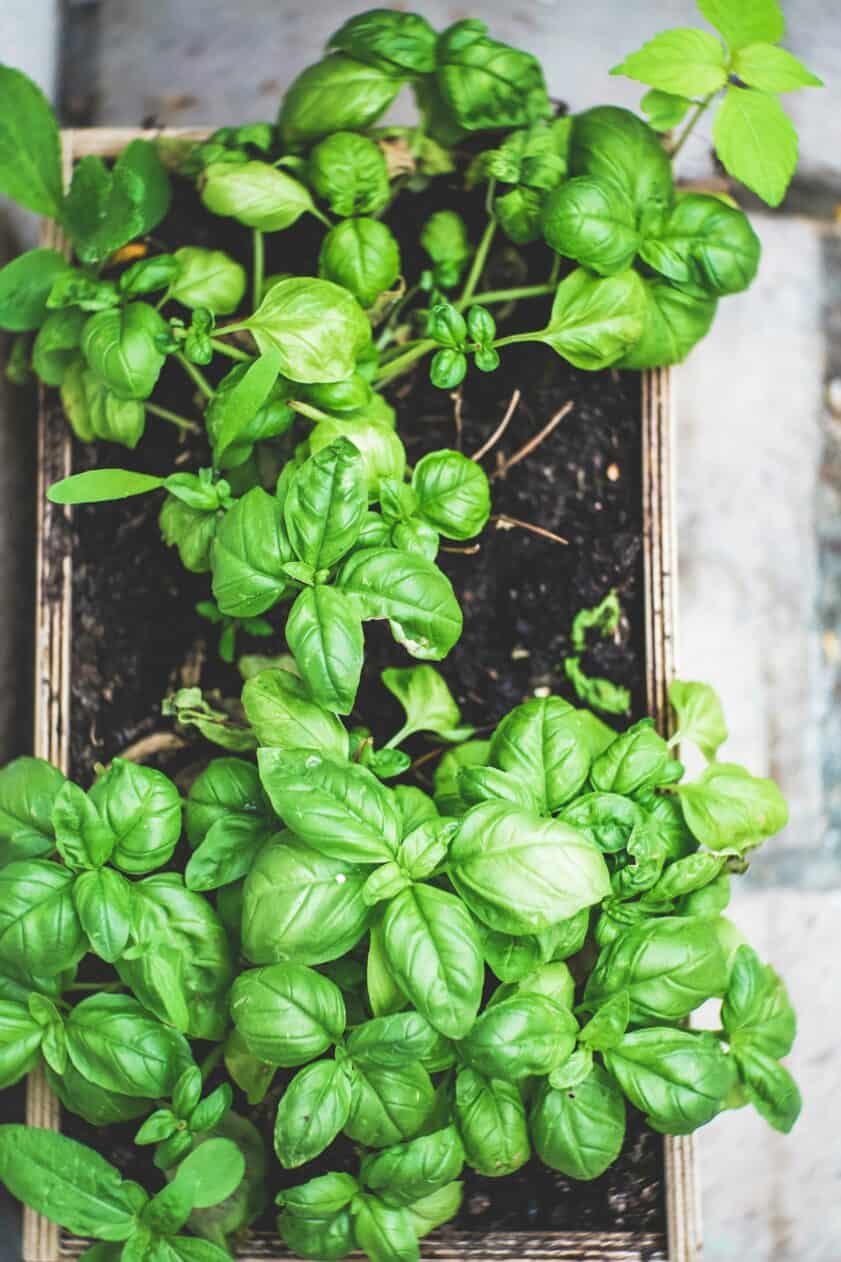
Basil can improve okra’s flavor while deterring pests like aphids and mosquitoes.
Planting basil near okra can create a natural barrier against these unwanted visitors.
Companion Plant #4: Nasturtiums
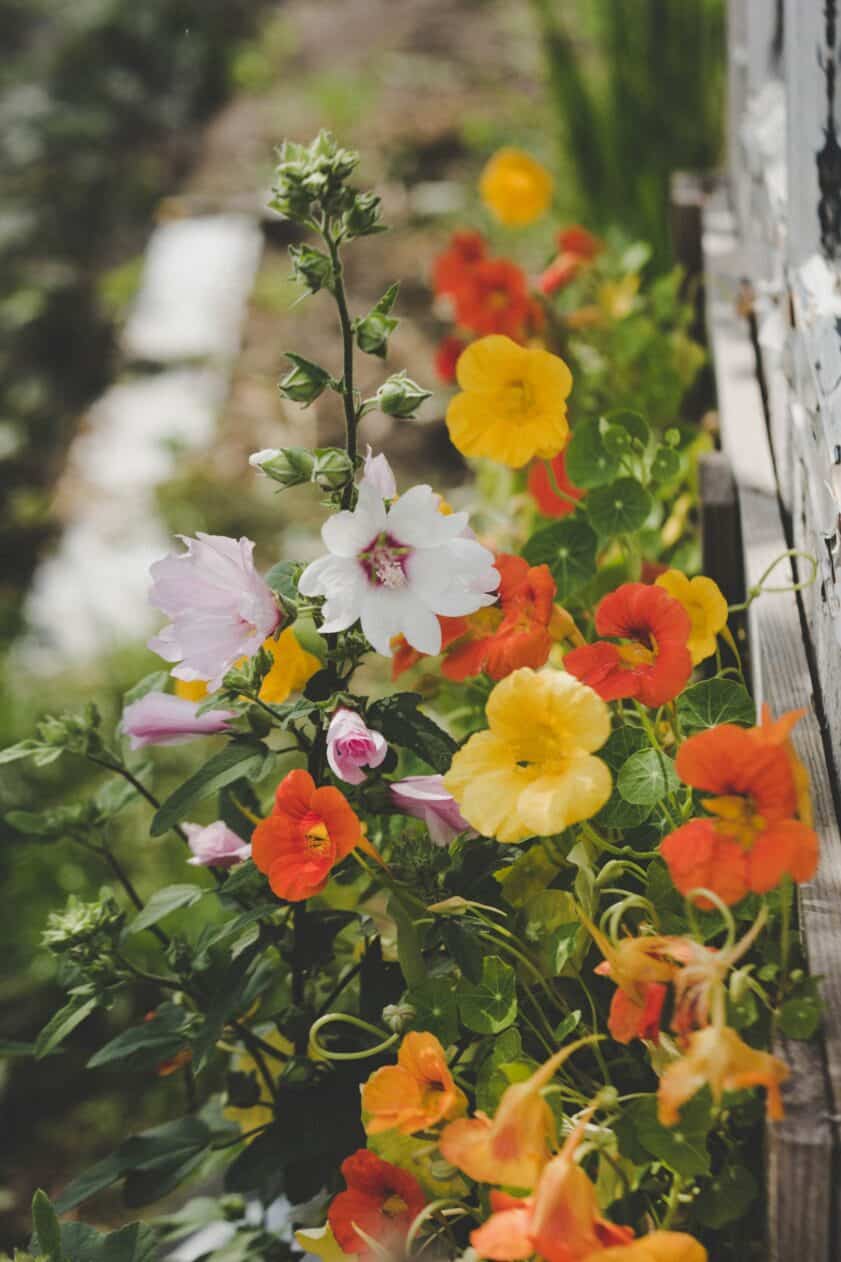
Nasturtiums can serve as a sacrificial trap crop, attracting pests away from okra.
Their vibrant flowers add color to the garden and attract pollinators.
Companion Plant #5: Chamomile

Chamomile possesses antifungal properties that can help prevent diseases in the garden.
Planting chamomile near okra can contribute to a healthier overall environment.
Companion Plant #6: Cucumbers

Cucumbers and okra are compatible due to their different growth habits.
Cucumbers can provide some shade and ground cover, reducing soil moisture evaporation.
Companion Plant #7: Amaranth

Amaranth acts as a natural windbreak and can help shade okra plants.
Its tall and sturdy nature can protect delicate okra from strong winds.
Companion Plant #8: Legumes
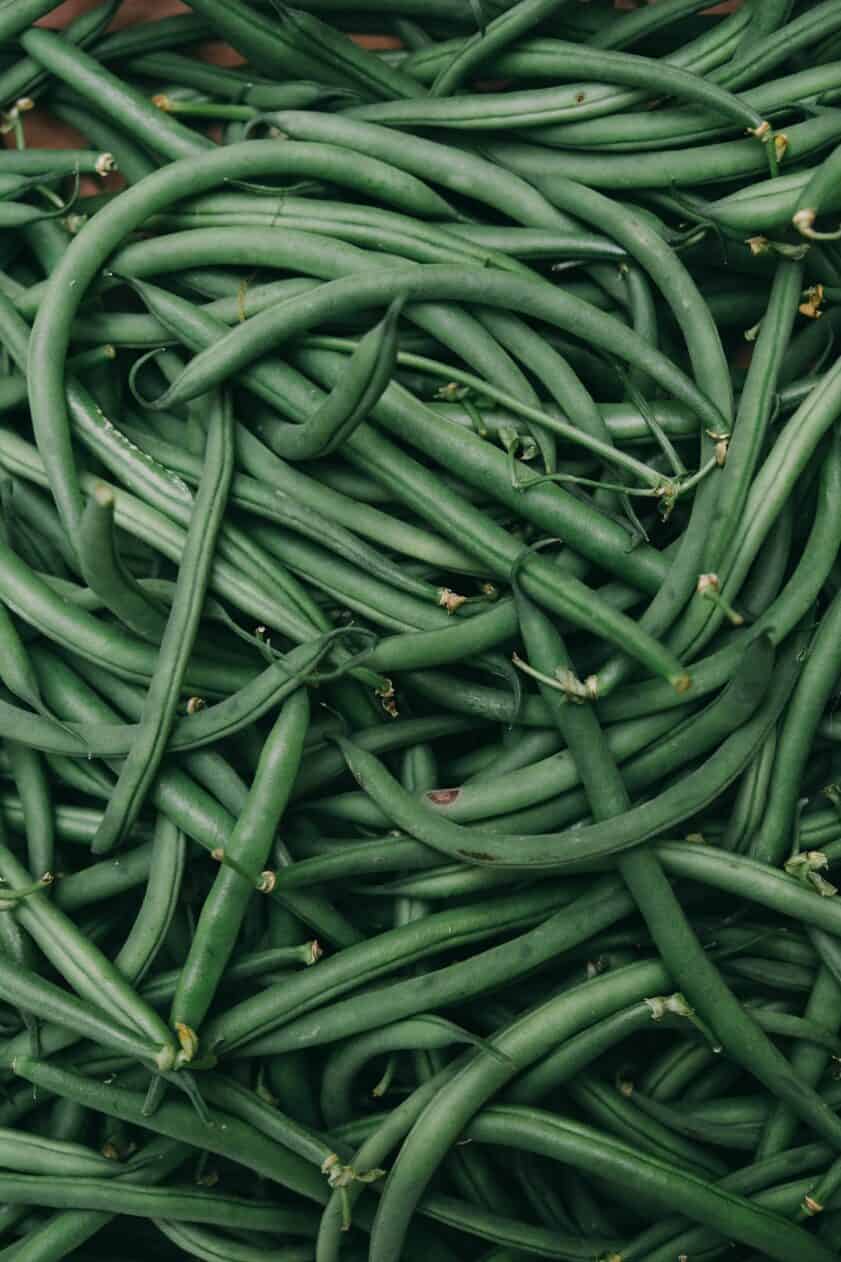
Legumes like beans and peas can help fix nitrogen in the soil, which benefits okra by providing a nutrient boost.
This helps in promoting healthy foliage growth.
Companion Plant #9: Lettuce
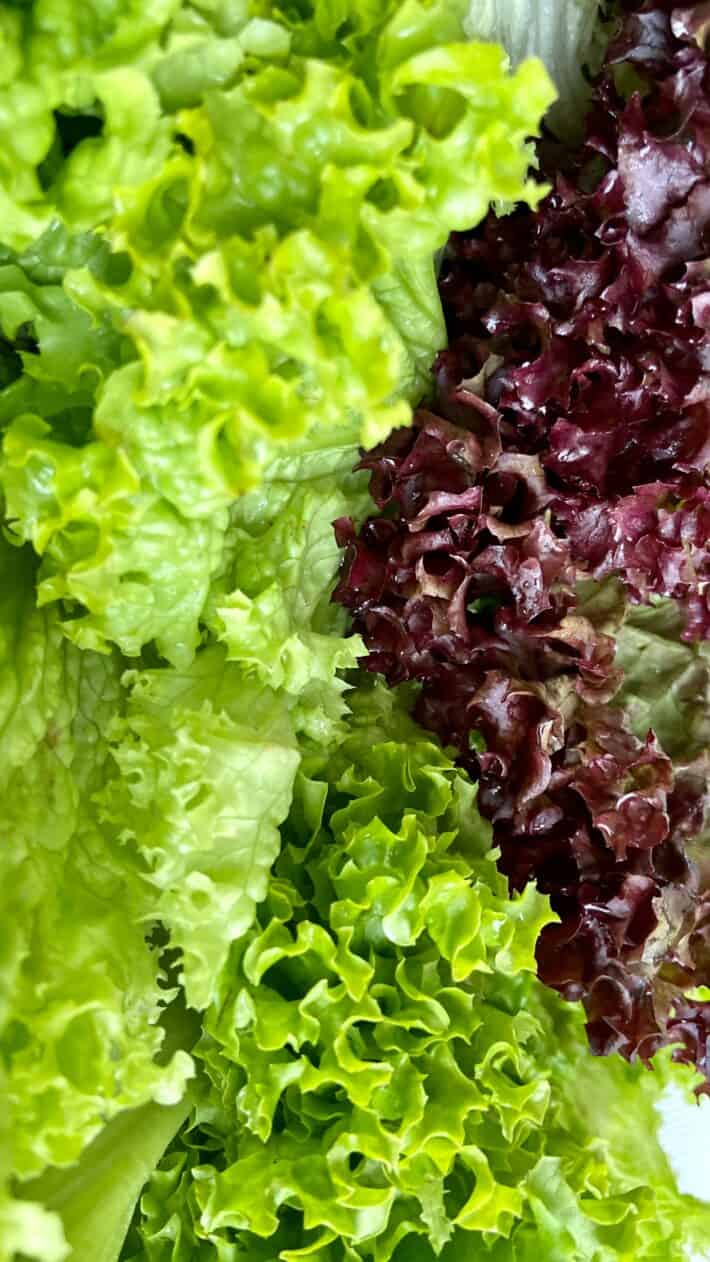
Lettuce can act as a living mulch, shading the soil around okra plants and helping to retain moisture.
It also doesn’t compete heavily for nutrients, making it a compatible companion.
Companion Plant #10: Onions

Onions are known for repelling various pests due to their pungent smell.
Planting them near okra can help keep pests at bay and create a more protected environment.
Companion Plant #11: Tomatoes

Tomatoes are a great companion for okra because their tall vines provide shade that protects okra stalks from sunburn.
They also attract beneficial insects like ladybugs that prey on common okra pests.
Companion Plant #12: Peppers

Peppers pair nicely with okra by providing pest control.
Pepper plants emit volatile oils that repel common garden insects that might otherwise feast on okra, such as aphids and cabbage worms.
Conclusion
Okra flourishes in the hot summer, but companion planting elevates its cultivation.
By selecting partners like nasturtiums, beans, sunflowers, and cucumbers that complement okra’s needs, a supportive ecosystem emerges where each element benefits the other.
Whether attracting pollinators, fixing nitrogen, or repelling pests, the right companions form cooperative relationships within the garden microcosm.


